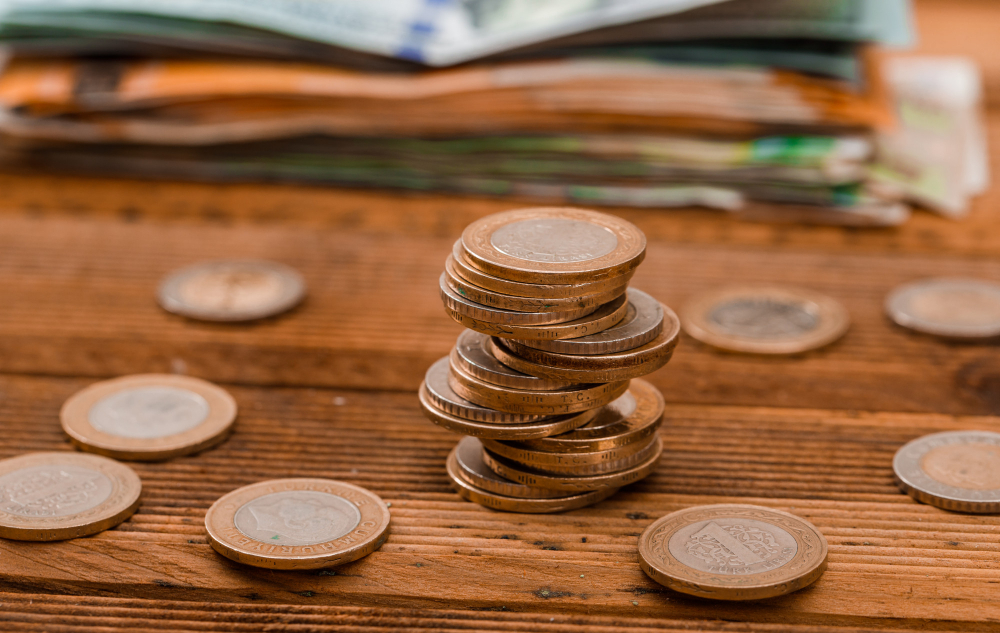When comparing home loans, it’s easy to focus on the headline rate – but that number doesn’t tell the full story. The comparison rate shows the true cost once most fees are included.Here’s how it works:Interest rate – what you’re charged on the loan balance.Fees – upfront, ongoing or annual costs added in.Comparison rate – combines both, giving a clearer picture of what you’ll actually pay. While Lender A appears cheaper, Lender B may cost less overall.Keep in mind: comparison rates are based on a $150,000 loan over 25 years. Most home loans are much larger and longer, so treat the rate as a guide – not a guarantee.Want to know which loan suits your unique situation? Let’s compare your options side-by-side.Rates, prices and lending policies are shifting – so now’s a smart time to check your finance. If you’re planning to build, buy or refinance, let’s make sure your loan is set up for what’s ahead.Need a home loan? Let's chat.Hit the button below to arrange a conversation with one of my loan specialists to find a deal that's best for your situation. Chat to us today We partner with over 50 lenders so you can find the perfect solutionFollow Facebook Linkedin Do you have questions about mortgages or loans?Ask us in the comments below … [Read more...] about Comparison rates explained — and why they matter
Credit card use is down – which may AID property buyers
Consumers are reducing their reliance on credit cards – the number of personal credit cards in circulation in July was 1.7% lower than the year before, while the amount of credit card debt attracting interest was 0.4% lower, according to the Reserve Bank of Australia. This reduction in credit card use is not only strengthening people's finances, but also their home loan applications.That’s because while it’s certainly possible to get a mortgage if you have a credit card, lenders tend to look more favourably on borrowers who either have lower credit limits or no credit cards at all.Why reduced credit card use can help your home loan applicationSafer profile – The less debt you have, the less risky you seem to lendersMore borrowing power – Fewer cards and lower limits mean banks are willing to lend you moreEasier to manage – With less plastic, it’s simpler to stay on top of your moneyIf you’re thinking about applying for a home loan, contact me for guidance on how to manage your credit cards and strengthen your creditworthiness.Need a home loan? Let’s chat.Hit the button below to arrange a conversation with one of my loan specialists to find a deal that's best for your situation. Chat to us today We partner with over 50 lenders so you can find the perfect solutionFollow Facebook Linkedin Do you have questions about mortgages or loans?Ask us in the comments below … [Read more...] about Credit card use is down – which may AID property buyers
Property market strengthens amid tight supply
Australia's median property price has now increased for seven consecutive months, after rising another 0.7% in August, according to Cotality. Three main factors have been driving this price growth, Cotality said:The three interest rate cuts in 2025 have increased buyers' borrowing capacityWages have been rising faster than inflation, further increasing borrowing capacityDemand has been exceeding supply – the number of homes being purchased is about 4% higher than the five-year average, but the number of homes being listed for sale is about 20% below the average for this time of year Why get a pre-approval before you start your property searchShow you’re serious – sellers and agents generally prefer dealing with buyers who already have their finance in placeKnow your limit – knowing how much you can borrow means you won't waste time looking at homes you can’t affordAct fast – when you find your dream home, you can make a firm offer without waiting for the bankStrengthen your offer with pre-approvalHit the button below to arrange a conversation with one of my loan specialists to find a deal that's best for your situation. Chat to us today We partner with over 50 lenders so you can find the perfect solutionFollow Facebook Linkedin Do you have questions about mortgages or loans?Ask us in the comments below … [Read more...] about Property market strengthens amid tight supply
Rising offset savings ease mortgage pain
Borrowers are putting more money into offset accounts – and that’s cutting the interest they pay on their home loans.On average, borrowers in the June quarter had $11,435 in offset for every $100,000 they owed on their home loan – up from $10,647 the year before, according to Australia's banking regulator, APRA.What’s an offset account?It’s a bank account linked to your home loan. Whatever money you keep in it is counted against your loan balance, which means you pay less interest. For example, if you owed $500,000 on your home loan and kept $20,000 in your offset, you’d pay interest on only $480,000 (i.e. $500k minus $20k) – not the full $500,000. On a 30-year loan at 5.68%, that could mean saving over $100 per month.*When offset is usefulIf you keep a good amount of savings or regular cash flow in your accountIf you want the flexibility to access your money anytime, while still reducing interestWhen it may not be worth itIf your balance is usually low – the fee for an offset account might cost more than the interest you saveIf a basic home loan with a lower interest rate would leave you better off*This example is for illustration only and does not take into account your personal circumstances. Savings will vary depending on your loan, interest rate, fees and charges. This information is general in nature and should not be taken as personal financial advice.Need a home loan? Let’s chat.Hit the button below to arrange a conversation with one of my loan specialists to find a deal that's best for your situation. Chat to us today We partner with over 50 lenders so you can find the perfect solutionFollow Facebook Linkedin Do you have questions about mortgages or loans?Ask us in the comments below … [Read more...] about Rising offset savings ease mortgage pain
Borrowers are keeping on top of their loans
Fewer Australians are falling behind on their mortgages. In fact, the share of home loans running 30-89 days late dropped from 0.66% in June 2024 to 0.55% in June 2025, according to APRA, the banking regulator.Put simply, that means more than 99 out of 100 borrowers are up to date with their repayments – a really positive sign. Lower interest rates this year have helped ease pressure, and many households are managing their budgets better.The data also shows borrowers are making different choices with their new loans:More people are putting down bigger deposits – 69.6% had a deposit of at least 20% in June 2025, up from 68.1% the year beforeSome are stretching their borrowing power – 5.5% of new loans had a debt-to-income ratio of six times or more, up from 5.0% in 2024This mix shows that while most borrowers are in good shape, people approach home loans in different ways – some want the safety of extra equity, while others focus on buying power.If you’d like to talk through your own loan strategy – whether it’s planning a new purchase or refinancing an existing loan – please get in touch.Need a home loan? Let’s chat.Hit the button below to arrange a conversation with one of my loan specialists to find a deal that's best for your situation. Chat to us today We partner with over 50 lenders so you can find the perfect solutionFollow Facebook Linkedin Do you have questions about mortgages or loans?Ask us in the comments below … [Read more...] about Borrowers are keeping on top of their loans
Investor borrowing jumps in latest figures
Property investor activity is close to eight-year highs, the latest data from the Australian Bureau of Statistics has confirmed. Investors took out 37.7% of all new home loans in the June quarter, well above the five-year average of 32.7%.PropTrack senior economist Angus Moore said the number of new loans going to investors had increased steadily over the past 18 months, following a quiet period from mid-2022 (when interest rates started rising) and into 2023.“Activity from non-investors has picked up too, but not to the same extent. What this means is, investors are making up a very substantial share of new lending – close to as high as we’ve seen in a couple decades in some of the smaller states, and nationally about the highest since 2017,” he said.Depending on your situation, the potential benefits of property investing may include:Rental income – providing a steady cash flow that can help cover loan repayments.Capital growth – offering potential for long-term gains as property values increase.Tax deductions – delivering negative gearing and depreciation benefits.Portfolio diversification – offsetting the shares you might have in your superannuation.Leverage potential – controlling a large asset with a relatively small upfront deposit.Need a home loan? Let’s chat.Hit the button below to arrange a conversation with one of my loan specialists to find a deal that's best for your situation. Chat to us today We partner with over 50 lenders so you can find the perfect solutionFollow Facebook Linkedin Do you have questions about mortgages or loans?Ask us in the comments below … [Read more...] about Investor borrowing jumps in latest figures
Buyers snapping up new homes, despite monthly dip
Australia’s new home sales remain at elevated levels, despite a 6.4% month-on-month decline in July, according to the Housing Industry Association (HIA).HIA senior economist Maurice Tapang said the decline was likely due to buyers bringing forward their purchases to capitalise on end-of-financial-year sales in June, rather than a change in underlying demand, as new home sales in the three months to July rose by 15.9% – the highest level since the September quarter of 2022. If you’re thinking about buying a new home, it’s important to remember that construction loans differ from standard home loans. Here’s how:Funds are released in stages rather than as a lump sumRepayments usually cover interest only during the construction periodInterest is charged only on the funds that have been drawn downInspections are carried out before each stage payment is madeThe loan typically converts to a standard mortgage once construction is completePlease reach out if you’re interested in learning more about construction loans and how they could help you finance a new build.Want to compare construction loans? Get in touchHit the button below to arrange a conversation with one of my loan specialists to find a deal that's best for your situation. Chat to us today We partner with over 50 lenders so you can find the perfect solutionFollow Facebook Linkedin Do you have questions about mortgages or loans?Ask us in the comments below … [Read more...] about Buyers snapping up new homes, despite monthly dip
Refinancing surges as borrowers chase better deals
An enormous number of Australians have been refinancing their home loans this year. In the June 2025 quarter, the number of mortgages that were refinanced with external lenders was 0.8% higher than the March 2025 quarter and a striking 20.9% higher than June 2024, according to the Australian Bureau of Statistics. This surge in refinancing coincided with interest rate cuts by the Reserve Bank of Australia in February and May, which prompted many lenders to reduce their home loan rates. For borrowers, refinancing has been a way to secure lower repayments, lock in a sharper deal or access equity for other financial goals.If you’re thinking about switching lenders, it’s important to do your homework. Refinancing can deliver big savings, but it’s important to choose the right lender, loan and structure. Fees and charges can erode the benefit of switching, and each lender has its own credit policies that can affect your borrowing power.Review your loan nowHit the button below to arrange a conversation with one of my loan specialists to find a deal that's best for your situation. Chat to us today We partner with over 50 lenders so you can find the perfect solutionFollow Facebook Linkedin Do you have questions about mortgages or loans?Ask us in the comments below … [Read more...] about Refinancing surges as borrowers chase better deals







